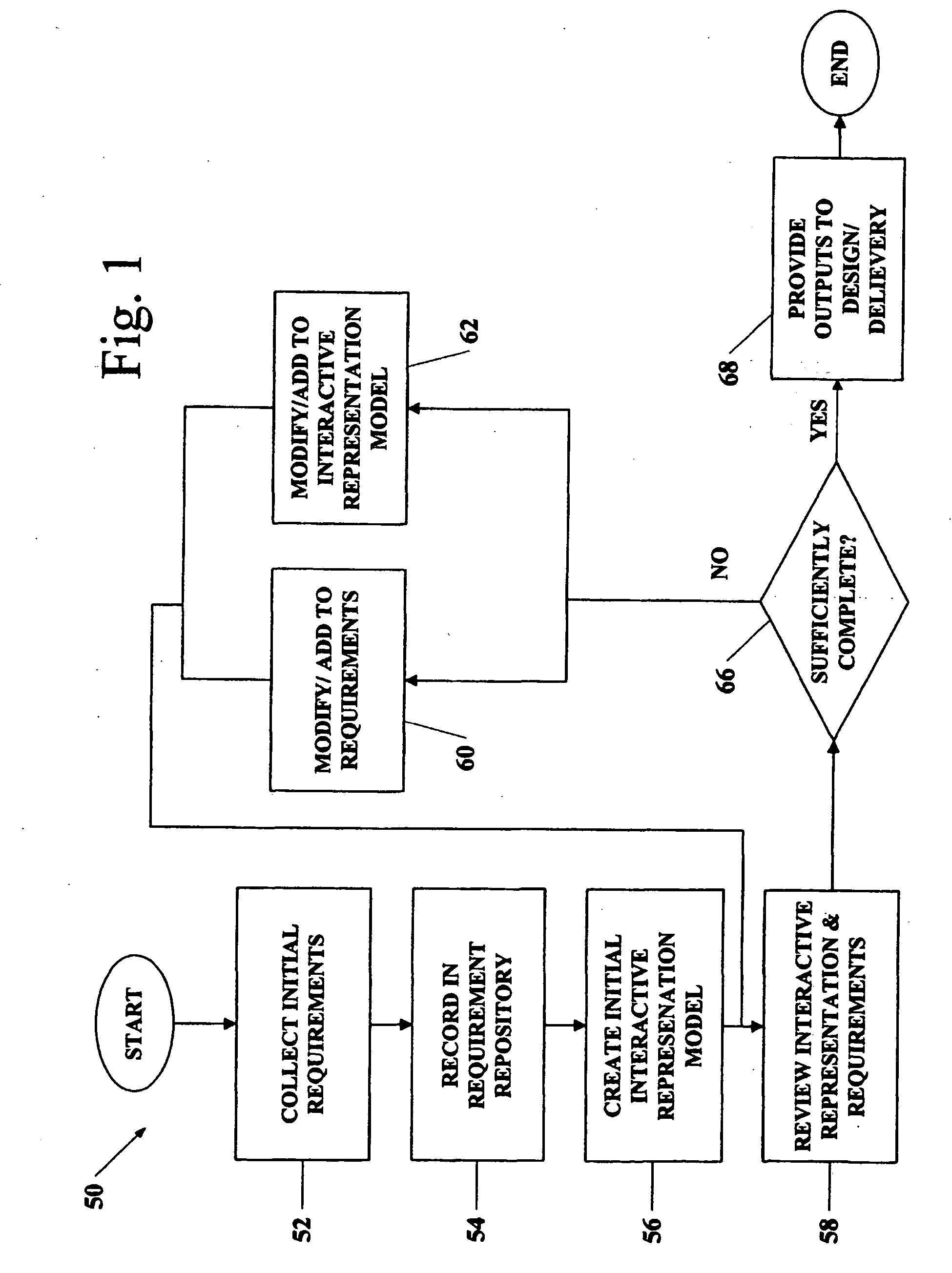As organizations are forced to do more with less, the need to deliver such applications on-time and on-budget without sacrificing quality presents a bigger challenge than ever before.
One of the major problems in these fields is
system definition, i.e., the effective identification of accurate, complete and unambiguous requirements for the system or application.
These applications must meet requirements related not only to
graphic design, content and
usability, but also related to complex scenarios of user system interactions that are not complete and accurate requirements from outset and may not even be documented before starting the application design.
Each of these approaches is associated with significant problems.
However, once an application is in the testing stage, it is very difficult to go back and change something that was not well thought out in the concept stage.
Also, typically, problems are not discovered until
system testing, and requirements must be fixed before the system is designed.
Requirements evolution makes the development method unstable.
Often during the design and
code writing phases, requirements inconsistencies, missing system components and unexpected development needs are discovered.
Also, system performance cannot be tested until the system is almost coded, and under-capacity may be difficult to correct.
For these reasons the standard
waterfall model has been associated with the failure or cancellation of a number of large systems.
All of these
waterfall type approaches suffer from the same or similar problems, however.
Because the requirements for most systems are not well understood in the beginning, the costs for development often become excessive and delivery schedules originally estimated must be revised.
Finally, because complex systems typically are not well understood in terms of their actual implemented behaviors, it is only through actual interaction with the system that the system designers and business analysts truly begin to understand what has been built.
Although the lessons learned may be valuable during waterfall implementations, they cannot easily be taken
advantage of, due to the prohibitive costs of re-factoring the designs and implementations to reflect the new requirements that spring from these lessons.
The prototyping approach also has been associated with numerous problems, foremost among them is that prototypes are typically written in computer languages that only programmers can understand and use.
The first drawback is that business analysts, who are the people most likely to understand the needs and desires for the computer application, cannot develop the prototype without reliance on computer programmers, and must translate and communicate these needs and desires to computer programmers in order to have them construct the prototype.
This communication is traditionally inefficient and translation errors tend to be introduced because of the differences in the interpretation of the needs and desires for the prototype between two constituencies with differing backgrounds and
skill sets.
Thirdly,
programming resources need potentially expensive hardware and software tools to accomplish their work.
Fourthly, because prototypes are frequently constructed using the same infrastructure that the eventual application will be deployed upon, prototyping efforts are frequently delayed until strategic hardware acquisition, development
software acquisition and training have been completed.
Yet another problem with prototyped systems is that they tend to become a replacement for actual development of the envisioned system.
Because the programmers were originally building just a subset of the system for demonstration purposes, short cuts typically are taken in this phase that lead to systems that do not scale well and have significant performance problems.
Yet another problem with coded prototypes is that they suffer from poor
documentation, often because the prototype and the requirements are not represented within the same context.
Another problem with coded prototype based developments arises from the tendency for difficult problems to be pushed to the future, and not solved by the time of product completion, so that the initial hope of the prototype is not met by the subsequent product.
Prototypes created in this manner, however, suffer from additional drawbacks.
Foremost among them is that such static prototypes created with drawing and diagramming software are unable to convey to stakeholders an understanding of or how the application will behave.
To summarize the forgoing discussion of background art; coded prototypes suffer from drawbacks derived from the need to utilize computer programmers in their construction and
static image prototypes suffer from drawbacks derived from the fact that they are inherently not interactive.
The reliance on static documents to transfer the requirements into a correct
computer program results in repeated cycles of development.
These cyclic and redundant development activities inflate the cost of the resulting system.
This invariably leads to failures of the code to correctly embody the users' requirements, longer development cycles, increased costs and lower quality end products.
In addition, known computer application development approaches typically do not include input from all of the various stakeholders.
This serial process leads to misunderstandings, unresolved issues and misconceptions.
Finally, another problem with known software application development approaches is that software testers are provided with only a document for use in developing
quality assurance and acceptance tests, and
acceptance testing can occur only at the end of the development cycle.
This is an additional source of
delay and problems because the
quality assurance engineers are then required to conduct there own interpretation of all of the prior development work.
 Login to View More
Login to View More  Login to View More
Login to View More 


